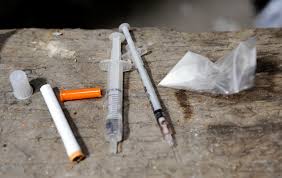Avoiding polysubstance abuse

Avoiding polysubstance abuse is action in positive direction
Avoiding polysubstance abuse: Drug addiction
We are living in a world where people want to explore all things even those that are dangerous to their lives. Take for example drugs, there are substances which are not just harmful to one’s life but are life threatening and fatal. You wonder why someone would want to take this kind of adventure. I am trying to confuse you but I am simply introducing the topic of avoiding polysubstance abuse defined as the use of more than three groups of addictive substances over a period of one year. When this happens, pain is registered in the whole family. According to doctor Dalal Akoury MD, President, and founder of AWAREmed Health and Wellness Resource Center, when a person indulges in acts of abusing several substances within a short period of time in an attempt to enhance the effect of a single drug to create a more intense high, death is not far away. You can, however, redeem yourself by seeking for treatment at this facility before it is too late. And as you consider that, the following are some combination drug users have “patterned”:
- Alcoholics who for example use will cocaine only after they’ve reached a certain state of intoxication meaning that they don’t overuse.
- Addicts who speedball that is to say that they are mixing cocaine and heroin for intravenous use and other combinations.
- There is another polysubstance subgroup, consisting mostly of adults already addicted to alcohol. After an injury or surgery, they were placed on opiate medications and developed a pain syndrome over time. They then mixed substances or switched to opiates as their drug of choice.
Avoiding polysubstance abuse: Polysubstance abuse among different populations
Adult polysubstance abuse, according to literature, is associated with other mental health conditions. Homelessness, personality disorders, and psychiatric disorders such as major depression, psychosis, and bipolar disorder are common. The overlap of polysubstance dependence and psychiatric problems points to a lot of self-medication. Typically, among multiple substance users, individuals used alcohol or marijuana at an early age and then added other substances without quitting their original substances.
- Among young people, polysubstance abuse is often the norm and not the exception. The most commonly abused polysubstance by adolescents are marijuana, alcohol, and heroin. Other drugs used include MDMA (ecstasy), dextromethorphan, multiple forms of opiates, cocaine, hallucinogens, and inhalants.
- One treatment facility said that 33 percent of the adolescents currently in treatment had a polysubstance addiction.
- The elderly are another population that clearly has a problem with polysubstance abuse.
- Older people have more medical conditions that often require prescriptions. Over time with debilitating illnesses such as Alzheimer’s disease, the tendency to over medicate (taking more of a drug, more often, forgetting when and if the medication was already taken) increases the likelihood of polysubstance abuse. Combined with alcohol, the results can be devastating, even fatal.
- Elderly women tend to keep their substance abuse and chemical dependency secret. Alcoholism occurs later in women’s lives, perhaps due to problems associated with divorce or separation. Women who are over 55 have less tolerance for alcohol and are therefore more prone to addiction. They are also less likely than men to seek treatment and also use prescribed psychoactive drugs.
Avoiding polysubstance abuse: Drug addiction








